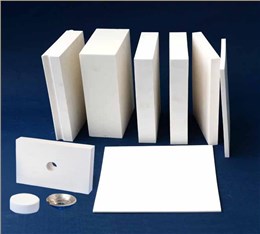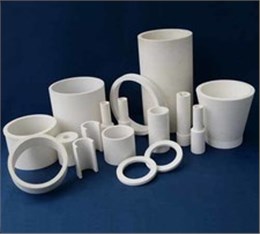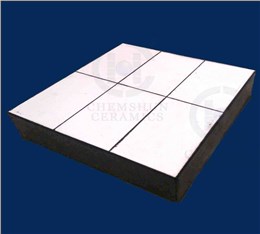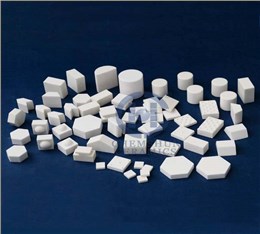Rubber ceramic composite liners are high-performance materials that combine the excellent wear resistance of alumina ceramics with the elastic cushioning properties of rubber. They are widely used in high-wear scenarios across heavy industries such as thermal power, steel, mining, and cement. Below is a detailed breakdown of their core characteristics:
1. Exceptional Wear Resistance
Alumina ceramic, as the primary material of the liner, typically contains ≥92% aluminum oxide (Al2O3), with high-purity variants reaching over 95%. Through high-temperature sintering (1700°C), the ceramic layer achieves a Rockwell hardness (HRA) of 85–90, second only to diamond. Its wear resistance far exceeds traditional metals—for example, it is 266 times that of manganese steel and 171.5 times that of high-chromium cast iron. This property extends the service life of equipment like coal conveying systems, coal mills, and hoppers by over 10 times under prolonged material abrasion.
2. Outstanding Impact Resistance and Cushioning Performance
The rubber layer, tightly bonded to the ceramic through vulcanization, provides excellent impact resistance. The elasticity of rubber effectively absorbs the impact force from large falling materials (e.g., ores, coal), reducing the risk of ceramic breakage. For instance, even when bent 360°, the ceramic remains intact. Additionally, the rubber layer minimizes noise and vibration during material transportation, enhancing operational stability.
3. Resistance to Extreme Temperatures and Chemical Corrosion
Temperature Resistance: The ceramic layer withstands long-term exposure to 0–250°C, while specially formulated rubber retains elasticity between -50°C and 100°C (heat-resistant variants up to 250°C), preventing aging or brittleness.
Chemical Resistance: The ceramic resists weak acids, alkalis, and chemical media, making it suitable for corrosive environments in chemical and metallurgical industries.


 Ceramic Tile Liner
Ceramic Tile Liner Alumina Ceramic Pipe Liner
Alumina Ceramic Pipe Liner AL92 Ceramic Rubber Chute Liner
AL92 Ceramic Rubber Chute Liner Wear Resistant Ceramic Liner
Wear Resistant Ceramic Liner